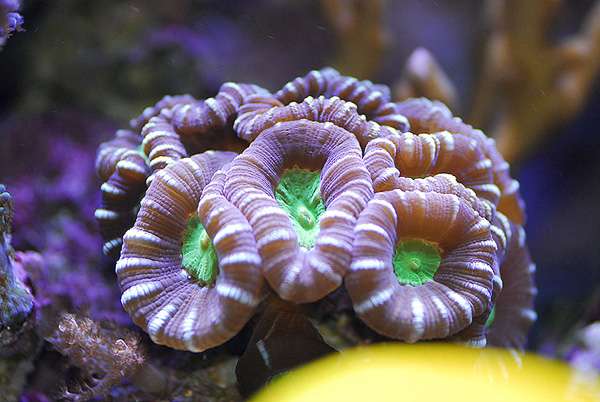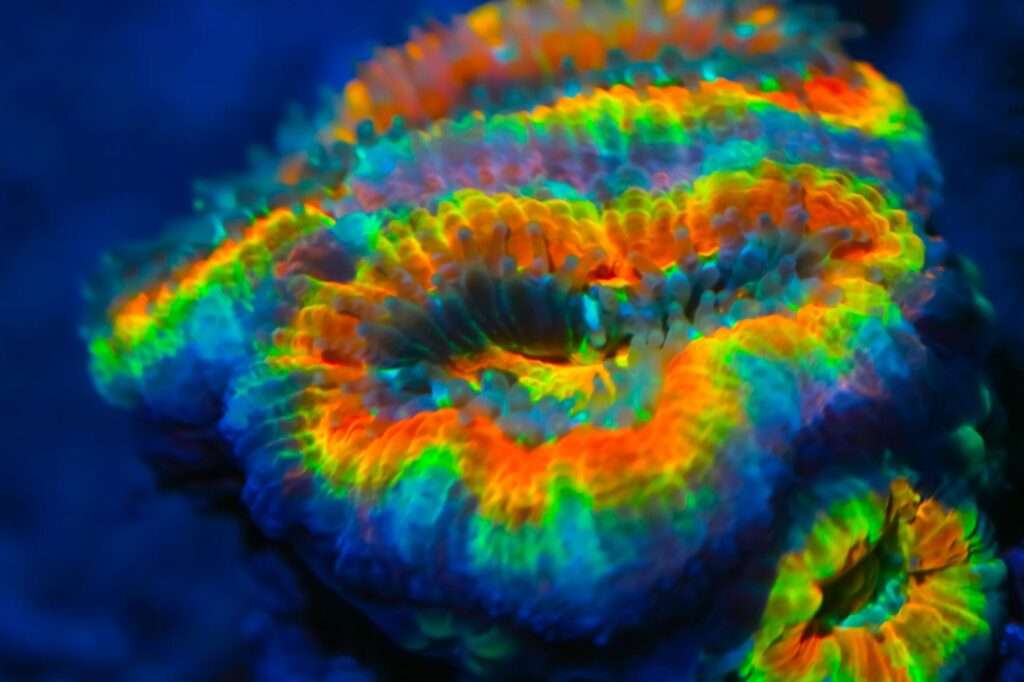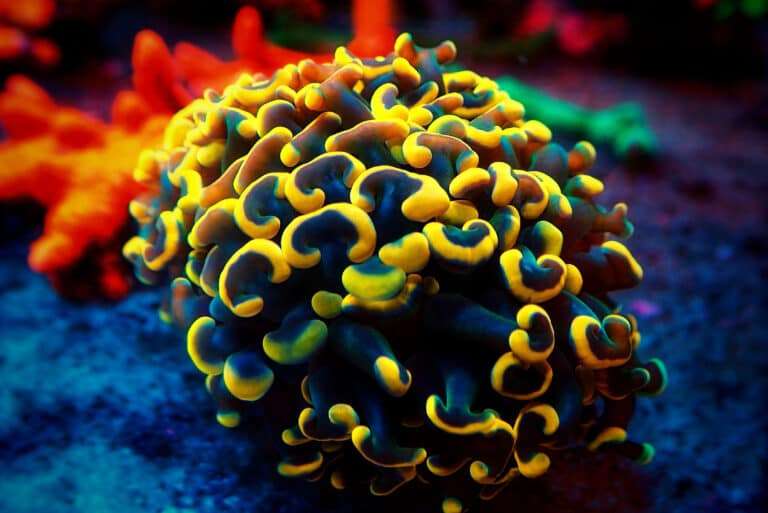
Caulastrea furcata, is a vibrant species that typically has neon green centres and brown polyps. There may also be lighter stripes extending outward from the centre of the outer dark portion. It has been bred in captivity with great success. The septa just beneath the polyp’s flesh that give it a peppermint-like striped appearance are whence this species gets its name
Habitat
Dana wrote about the Candycane Coral, Caulastrea furcata, in 1846. In captivity, the C. furcata has been reproduced. C. furcata can be found all throughout Australia, from the Seychelles and Maldives Islands to Fiji and Tonga. The Great Barrier Reef, Coral Sea, and Scott Reef are the reefs that they live on in Australia. The C. furcata is mainly found in shallow, bright water with a surging water flow on protected reef slopes with sand substrate.
Morphology
The candycane coral, C. furcata, is a branching formation coral with one or more mouths at the top of each branch and a single or double head. This species gets its name from the septa (teeth on the inside of the corallite or polyp wall) that protrude just below the flesh of the polyp and give it a striped appearance resembling a peppermint. The polyps of the Candycane Coral are typically round or oval in shape and range in diameter from 9.5 to 10 mm. Unlike some of the other Caulastrea species, they are not huddled together as densely. Although they are connected to a shared base, they appear independent and separate. Zoanthids occasionally develop between the heads.
The most prevalent Caulastrea species in the aquarium commerce is the candycane coral C. furcata, which typically has more vibrant colors than the other species. Although it doesn’t have quite as much color as the Candy Coral, the Trumpet Coral C. echinulata has a very similar appearance.
In Captivity

- Feeding
Caulastrea corals have evolved a variety of feeding techniques. They get some of their nutrients from a marine alga called zooxanthellae through a symbiotic interaction. They can also take in dissolved organic substances and planktonic creatures as well as food particles from the water column. They can be fed when their tentacles are extended, but if food is spotted, they will emerge during the day. Feed mysis, seafood that has been coarsely minced, and items of a similar size. They do require feeding at least twice a week, and regular feedings help them grow very well. It is beneficial to stop the water pumps when feeding.
- Social Interactions and Compatibility
When in close proximity to other corals, Caulastrea corals have the potential to become semi-aggressive, so there should be some space between them. In general, it is not quite correct to suggest that a coral is calm since its tentacles are shorter. Despite having only 2″ sweeper tentacles, Candycane Corals have a stronger sting than many other corals that have 6″ sweeper tentacles. The species of Caulastrea are frequently discovered in the wild alongside commensal mollusks, sponges, zoanthids, and other sessile invertebrates. Although zoanthids frequently encroach on coral heads, the coral does not appear to mind.
Table





